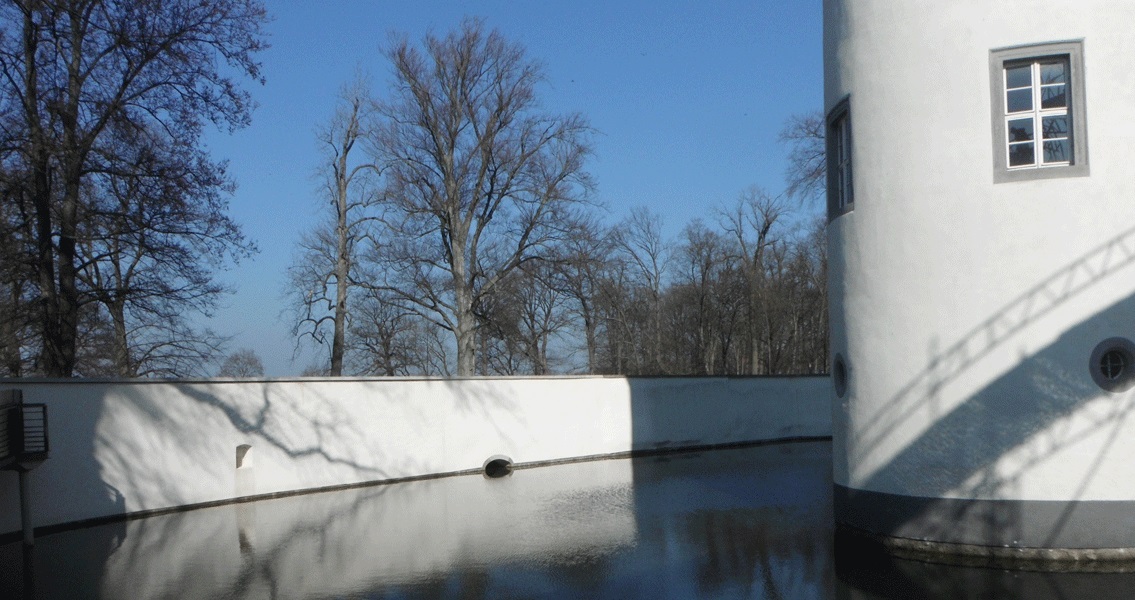Brandenburg - Germany
Maintenance and repair measures are essential from time to time to ensure that century-old moated castles are kept structurally sound and appealing in appearance for posterity. The right expertise and suitable product systems are essential for such work. And both are available from the Oxal division of MC.
Name
Specialist expertise for the repair of moated castles
Country
Brandenburg - Germany
Products
Exzellent STP 610
Exzellent STP 700
Exzellent STP historic Feinputz
Maintenance and repair measures are essential from time to time to ensure that century-old moated castles are kept structurally sound and appealing in appearance for posterity. The right expertise and suitable product systems are essential for such work. And both are available from the Oxal division of MC.
The regulations governing the protection of listed buildings mean that repairing historic structures is a very demanding undertaking (see also MC Aktiv 1/2014), not least because the restoration work also invariably has to ensure that the original appearance is fully retained. Due to the proximity of water, moated castles naturally encounter frequent problems involving very damp masonry and thus also exposure to salts. This adversely affects not only the render but also the entire structure. In order to restore the functional and visual characteristics of both, product systems are required that are specifically tailored to ensuring durable results under such conditions.
Grosskmehlen moated castle – lasting protection despite water exposure
The company Schlösser GmbH of Potsdam, Germany, is responsible for the upkeep and maintenance of a particularly heavily soaked historic monument, the Grosskmehlen moated castle in the south of Brandenburg, Germany. Huge problems were identified in the course of repair work being carried out on the buildings there. The new render applied to the base of a carriage house had already begun to show signs of damage after just a short time. As the previous measures implemented had not brought the desired success, Schlösser GmbH began looking around for new solutions to the problem – and came upon MC-Bauchemie. Klaus Schindler, a sales engineer working for Oxal in Brandenburg, inspected the situation on site and recommen-ded Oxal’s moisture-regulating render Exzellent. The decision was taken to initially apply Exzellent to a sample section of the carriage house in question. After a trial period amounting to two whole years, the treated surface still exhibited no signs of deterioration. This led Schlösser GmbH, in consultation with the architect responsible, to choose Exzellent as the render for all the damp areas. The special pore geometry of this moisture-regulating render causes it to extract the moisture together with the dissolved salts from the masonry to its air-side surface. It is up to 15 times more efficient in this than hydrophobic repair renders, and this process will not damage either the underlying masonry or the render itself.

Historic renders are cement-free and can be used selectively for the repair and refurbishment of historic buildings.
© MC-Bauchemie 2014
The repair project began in May 2013 and was completed in September of that year. The entire ring wall containing the moat was covered inside and out with the white machine-applied render Exzellent 600, with the areas of the castle close to the water being rendered with coloured Exzellent 700. In addition, all the foundations of the ancillary buildings were provided with white trowel-applied Exzellent 610. “We encountered particular challenges in having to apply thicknesses of up to 10 cm around the ring wall. Although Exzellent with its low as-applied weight and high basic stability allows thick-coat application, we had to find a special solution in this case,” says Klaus Schindler. After consulting Dr. Andreas Zahn, Head of Oxal Sales, it was therefore decided to level the unevennesses with an undercoat of Oxal SM TK. This joint refilling mortar is open to water vapour diffusion and exhibits outstanding edge bonding with natural stone masonry. This coating was followed by 3 to 3.5 cm of Exzellent, which was then roughened with a grated scraper. The result is a particularly even surface, leaving the project promoters delighted with the results achieved.
Authentic appearance for Banská Bystrica moated castle
The challenges encountered with the Banská Bystrica moated castle near the Slovakian town of Zvolen were rather different. This castle, built as a fortress in 1576, had already largely fallen into ruin, with the last owner having abandoned it in 1978. Originally it had a rampart wall with four turrets and a moat with a drawbridge, and was built as a means of protection against Ottoman attacks. For the new owner, the company Vodný hrad s.r.o., there was no choice but to opt for a complete reconstruction in order to return this renaissance castle back to its former glory. The main priority for the owner was to restore the ramparts, walls and other structural components to their original appearance. For this purpose, Oxal RM, a special splatter coat with a natural stone appearance, was selected. Thanks to its good application properties, this is ideally suited both to the rock imitation and also the delicate re-sculpting work. The outstanding quality of the mortar impressed the contractor, Ing. Rajnoha.
All the areas that originally consisted of natural stone were replicated in this project in accordance with their original appearance using Oxal RM, with various colour shades being prepared on site as required. The contractor was so delighted with the material properties and the versatility of Oxal RM that the same render was also ordered for construction of the imitation stone bases, paving slabs, steps and stairways, balustrades, facings, fireplaces, etc. The reconstruction of the moated castle is proceeding very well, with completion scheduled for 2015.
We are continuously improving our website and we use cookies for this purpose. For an optimal user experience, we recommend that you accept them. Otherwise, parts of the page will be deactivated in the display in accordance with data protection regulations.